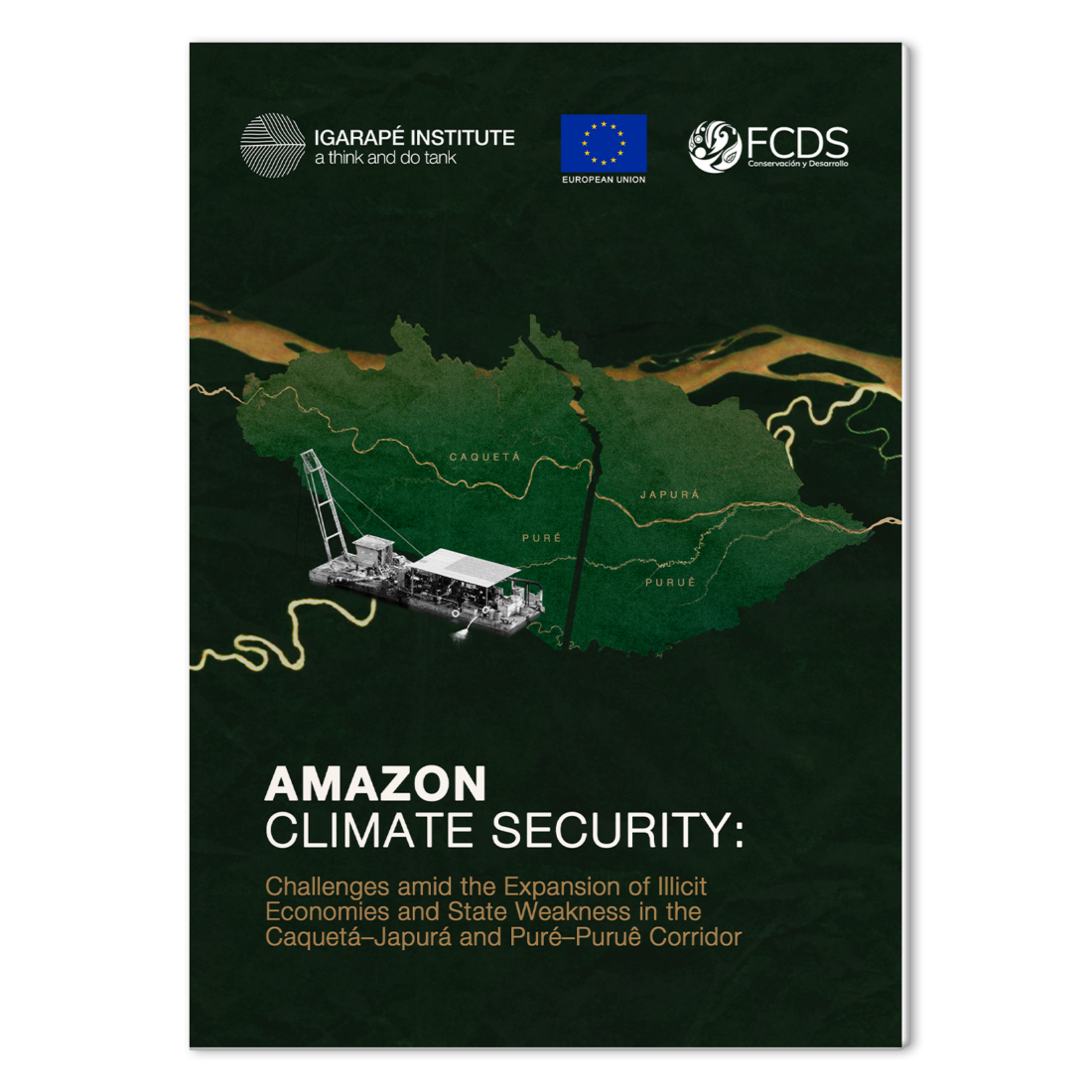Amazon Climate Security: Challenges amid the Expansion of Illicit Economies and State Weakness in the Caquetá–Japurá and Puré–Puruê Corridor
 The transboundary region between the Caquetá–Japurá and Puré–Puruê rivers, located between southern Colombia and northern Amazonas State in Brazil, is one of the most well-preserved and, at the same time, most vulnerable ecological corridors in the Amazon. In this setting of interconnected rivers, vast areas of primary forest, and permeable borders, the presence of illegal mining and drug trafficking causes mercury contamination, accelerates deforestation, intensifies armed violence, and imposes severe impacts on Indigenous people.
The transboundary region between the Caquetá–Japurá and Puré–Puruê rivers, located between southern Colombia and northern Amazonas State in Brazil, is one of the most well-preserved and, at the same time, most vulnerable ecological corridors in the Amazon. In this setting of interconnected rivers, vast areas of primary forest, and permeable borders, the presence of illegal mining and drug trafficking causes mercury contamination, accelerates deforestation, intensifies armed violence, and imposes severe impacts on Indigenous people.
Conducted in partnership with the Foundation for Conservation and Sustainable Development (FCDS) and the Igarapé Institute, this study provides an overview of the region, which plays a key role in regulating the climate and ensuring biological connectivity between the Andes mountain range and the central Amazon basin.
The scarcity of integrated data and coordinated policies between Colombia and Brazil in one of the most remote transboundary areas of the Amazon reveals that geographic isolation, limited state presence, and the expansion of illicit economies have turned the territory into an epicenter of socio-environmental degradation.
From a transboundary perspective, the study proposes integrated solutions to address both legal and illegal economies that drive deforestation and violence in the region. It also presents new evidence on the convergence between illicit economies, environmental crimes, and governance challenges, with the goal of informing public policies and interventions aimed at reducing violence, strengthening governance, and curbing the expansion of organized crime.
The research further provides an innovative analysis focused on the Caquetá–Japurá and Puré–Puruê circuits, incorporating new data on the dynamics of illegal mining and drug trafficking, as well as their impacts—mercury contamination, deforestation, and multiple forms of violations and violence—across one of the least-studied Amazonian border regions. In addition, it combines spatial analysis, fieldwork, and institutional mapping of the circuit, proposing concrete strategies to strengthen regional cooperation, environmental governance, and climate security.
Read the publication
Learn more about this topic in Markets and Forest: Under the Radar: Territorial and Regulatory Security Risks in the Brazilian and Colombian Amazon, Transforming the Economy in the Amazon



